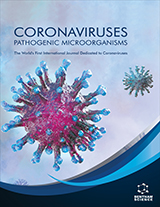Abstract
Background: Recently, the COVID-19 spread has been drastically increasing worldwide at a breakneck pace. It has resulted in an unparalleled trial in education. Mostly, all educational institutes have announced their closure to adhere to the government guidelines and have adopted the online learning and teaching mechanism. To look at the optimistic side of this epidemic, we see that people have come up with advanced skills and technologies, new modes of learning, contemporary perspectives, and countless new trends to provide seamless educational services even during this crisis for a better tomorrow.
Objective: Survey school and college students after online education and adhere to the government guidelines.
Methods: We directed questionnaires and conducted surveys by 4 members using online mode by Google form, and the data were analysed using mean and percentage.
Results: This survey started on 1st June 2021. During the lockdown period, most students responded through online mode, while some gave their responses in off-line mode, which effectively limited the research. Students are more likely to be interested in self-study than virtual studies. During virtual study hours, which schools and colleges provide, students use social media on different tabs and pay the least attention to what is tutored. However, due to online exams, they have access to all websites and even their books, so there is a lesser drop in their grades, making them believe in more unrealistic things in life. Students learn to become dishonest, but some parents continue supporting them in their treacherous behavior just for the sake of grades. Therefore, the major belief of students is that online exams are useless. Scarcely any learner who gives an honest exam gets intimidated as the results are biased and hence embraces the pathway of bypass. However, amidst all of these, post-COVID-19 currents may allow us to visualize new learning techniques in India and make people more aware of the foreseeable future. In this research, we include school as well as college students. We have received 3120 responses from students.
Conclusion: This article discusses that during the COVID-19 crisis, students adopted the learning mode and what is the impact of COVID-19 on the education system.
Keywords: COVID-19 pandemic, virtual study, education, online learning, government guideline, questionnaire.
Graphical Abstract
[http://dx.doi.org/10.23880/cclsj-16000154]
[http://dx.doi.org/10.2147/RMHP.S284313] [PMID: 34012304]
[http://dx.doi.org/10.1016/j.jadohealth.2020.06.009] [PMID: 32593564]
[http://dx.doi.org/10.15406/jhvrv.2020.08.00227]
[http://dx.doi.org/10.1016/j.ijedro.2020.100012] [PMID: 35059663]
[http://dx.doi.org/10.1016/j.chb.2018.02.009]
[http://dx.doi.org/10.3389/fpsyg.2021.648253] [PMID: 34135814]
[http://dx.doi.org/10.1016/j.childyouth.2020.105194] [PMID: 32834270]
[http://dx.doi.org/10.1016/S2352-4642(20)30109-7] [PMID: 32302537]
[http://dx.doi.org/10.1016/S2589-7500(20)30315-0] [PMID: 33518503]
[http://dx.doi.org/10.21134/rpcna.2020.mon.2056]
[http://dx.doi.org/10.3390/su11061683]
[http://dx.doi.org/10.1016/j.childyouth.2020.105160] [PMID: 32834269]
[http://dx.doi.org/10.2174/2666796701999200617161348]
[http://dx.doi.org/10.1016/j.jpubeco.2020.104271] [PMID: 32873994]
[http://dx.doi.org/10.2174/26669587-v2-e2203030]
[http://dx.doi.org/10.7759/cureus.7541]
[http://dx.doi.org/10.1108/ILS-04-2020-0134]




























